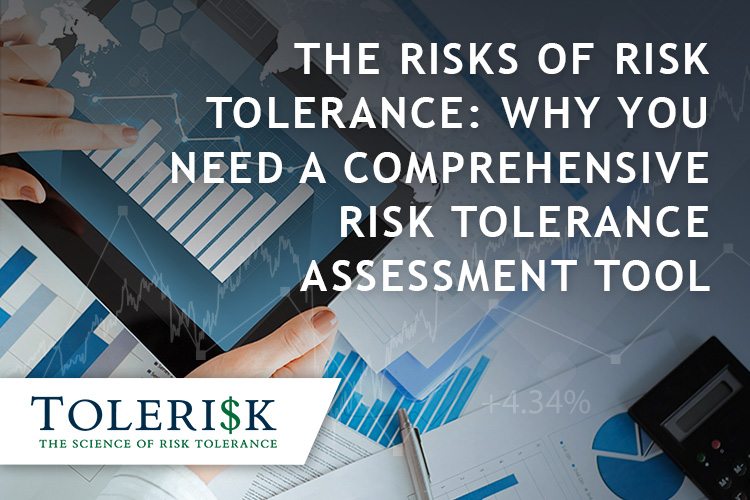Why You Need a Comprehensive Risk Tolerance Assessment Tool
23 May 2017

Financial Advisors take on great responsibilities when they manage the assets of their clients, especially advisors held to a fiduciary standard. In addition to ensuring the client has a diversified portfolio that is cost-effective, a client’s portfolio needs to be calibrated to the right level of risk for them….now and in the future.
Traditionally advisors used simple risk tolerance questionnaires that were required by their compliance officer. Neither the advisor nor the client put any real value in the output because it was overly simplistic and couldn’t reflect the client’s unique circumstances. According to Michael Kitces, as published on Financial-Planning.com, there are many risks to using these inadequate surveys within a financial advisory firm.
Identifying the Risks of Measuring Risk Tolerance Poorly
The typical risk tolerance questionnaire will simply address how comfortable an individual is with taking market risk. While this may measure a person’s willingness to accept risk, it does not account for their ability to take risk by incorporating their actual cash-flows. Without effectively incorporating such an important component of risk tolerance, advisors may not be recommending the best risk directive for their client.
A poorly selected risk directive means the client is either taking too much risk or too little. Both can have negative consequences. If the risk directive is too high, the client may be forced to liquidate risky assets at an inopportune time due to capital needs or limited emotional tolerance for risk. A risk directive that is too low means that long term performance is often sub-par, leading to reduced fruits of the client’s labor (delaying retirement date or reducing retirement lifestyle, or bequest).
A client using the wrong risk directive will likely eventually be dissatisfied. As such, they are less likely to continue utilizing your services and making referrals to your practice. Even worse, a dissatisfied client is more likely to file a complaint or pursue litigation, which can be a costly drain on resources.
What Do Advisors Need to Do to Minimize These Risks?
Financial advisors can minimize the risks of providing inadequate advice on a risk directive by investing in a high-quality risk tolerance assessment tool. It’s necessary to use a tool that scientifically measures a client’s actual ability to take risk and combines it with their willingness to accept risk. You’ll also want to make sure the technology in which you use helps you validate your client’s premise to make sure the advice you provide is based on realistic circumstances. It’s incumbent upon you to identify unrealistic circumstances and advise accordingly, prior to providing advice on a risk directive.
Why is Tolerisk® the Go-To Tool For Financial Advisors?
When it comes to choosing the most effective risk tolerance assessment tool, financial advisors should look no further than Tolerisk®. This risk tolerance assessment software is designed to accurately determine a client’s willingness and ability to take risks by considering both cash-flow chronology as well as personality. It incorporates mortality probabilities to scientifically validate your client’s premise and increase the confidence you both have in the risk directive selected. Tolerisk® is the only risk tolerance assessment tool that uses a scientific approach, making it the most comprehensive choice for advisors to help their client’s select the right portfolio risk today and in the future. In addition, Tolerisk® compiles the results into a comprehensive report that demonstrates a high level of fiduciary duty of care.
To find out more information about Tolerisk® and how it can help you build better relationships with your clients, contact us today.